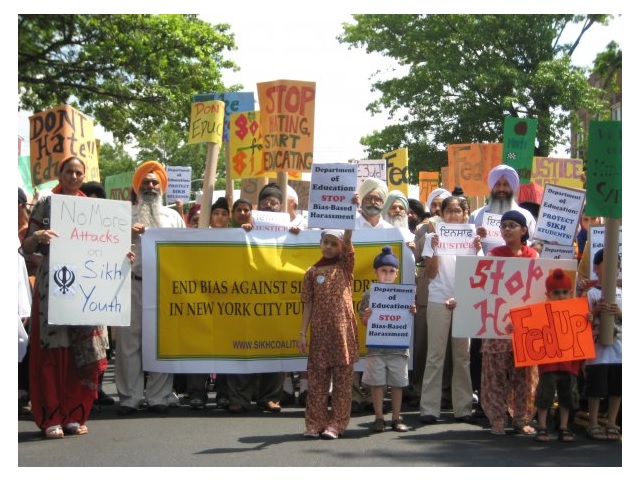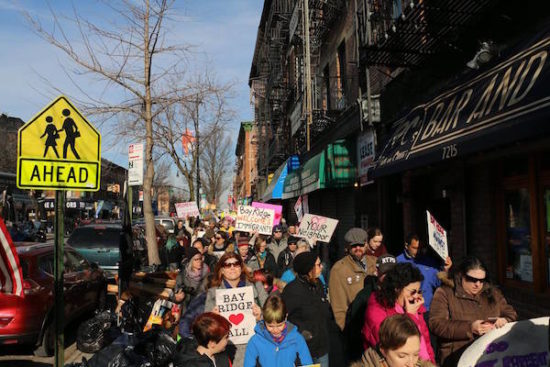100 years on, how lessons from the Ghadar movement show the limits of civil rights efforts in the US today.

November 7, 2013
This is the final installment in a series of pieces related to the 100th anniversary of the founding of the Ghadar Party. Read the others: a short history of the movement and the global imagination it sparked & four poetic responses to the literature of the Ghadar movement.
*
On the night of September 21, Prabhjot Singh, a Sikh man who wears a turban and has a long beard not unlike my own, was chased, surrounded, and brutally attacked in Harlem by a group of 15 to 20 young men who yelled “Get Osama” and “terrorist” as they punched and kicked him. Singh is a physician, a professor, an activist, and in my community of Sikh friends in New York City.
“It could have happened to any of us,” wrote one Sikh friend on his own Facebook page that evening. Being taunted and harassed has become the norm in the past 12 years for Sikhs and Muslims. Most of us have experienced being called Osama, terrorist, Taliban, and raghead, many have faced discrimination in the workplace, some, like me, have had our turbans (or hijabs) pulled off by strangers, and far too many, like Prabhjot, have been the targets of physical violence.
In the days and months after 9/11, when the first reported incidents of violence against Muslims, Sikhs, and Arab- and South Asian-Americans came to fore, a new Sikh civil rights movement was born in the United States. The attacks on an elderly Sikh man and two teenagers in Richmond Hill the day that the Twin Towers fell prompted the formation of what is now the nation’s largest Sikh civil rights group, The Sikh Coalition. The Sikh American Legal Defense and Education Fund (SALDEF), then a small Sikh media watchdog and advocacy group known as SMART, also mobilized, providing support to those who had faced attacks and raising awareness about the Sikh community in the US, with the hopes that education would quell intolerance.
Anti-Sikh violence in the US isn’t only a recent phenomenon. In the early 20th century, during the first wave of Punjabi migration to the US, this violence was rooted in the anxiety of white working class laborers who saw immigrant workers as a threat. The infamous Bellingham riots in September of 1907 in which Sikhs workers in Washington state were driven out of their homes, some fleeing to Canada, were followed by the murder of lumberyard worker Harnam Singh in Boring, Oregon in late October.
Some of those same workers joined hands with students at universities like UC Berkeley to form the Ghadar Party, a transnational movement founded 100 years ago and organized in large part by Sikhs from California to British Columbia to overthrow British rule in India and bring about socialism. In Urdu, ghadar means “mutiny” or “revolt.”
As Maia Ramnath writes in her global history of the Ghadar movement, how the Ghadarites were positioned—as immigrants living in the US calling for liberation in India—allowed them “to articulate American class and race relations to the economics and geopolitics of empire, by linking the grievances of discrimination against a low-wage immigrant labor force to the colonized status of their home country.”
Although the Ghadar Party’s life was short-lived, by linking the politics of empire with battles waged on the domestic front, it created a model useful for critically examining the work of Sikh organizations today.
Both the Sikh Coalition and SALDEF have accomplished impressive feats in the past decade. In New York City, the Sikh Coalition’s work with Sikh youth who have been bullied in schools sparked a multi-year advocacy campaign with a number of other community organizations that pushed the Department of Education to adopt an unprecedented regulation in 2009 that helps protect 1.1 million students from bullying based on race, religion, and sexual orientation. Both organizations have worked endlessly to curb racial and religious profiling by the TSA at airports as well as local law enforcement. They have also dedicated invaluable time and energy to on-the-ground direct support and media advocacy after members of the Sikh community have been subjected to violent attacks and just successfully compelled the FBI to create a new category to track hate crimes against Sikhs specifically.
Since 9/11, the Sikh American community, in part through these organizations, has begun setting an agenda: to ensure that Sikh Americans are afforded the rights given to other Americans.
But rarely have these organizations made any connection between civil rights issues at home and broader global struggles for justice and dignity. The Sikh Coalition, for example, has gathered force around what they have called the “campaign of our generation”: the fight for the “Sikh Right to Serve” in the US Army. Since 1981, the Pentagon’s uniform policy has not allowed Sikhs to serve in the military with unshorn hair and turbans. As a result of the campaign, which launched in 2009, the Army eventually granted accommodations to three Sikhs, but the overall policy remains in-tact, and so the “Sikh Right to Serve” campaign goes on.
The Pentagon’s policy is one of blatant discrimination. It is is unacceptable for any employer, especially the federal government, which sets a powerful precedent for the nation at large. But what does this fight for equal rights mean when the employer in question is responsible for some of the most egregious human rights atrocities of the past several decades?
There is painful irony to this campaign, given the role of the US military—and the US government’s war on terror policies more generally—in perpetuating the kind of hatred that leads to attacks on Sikhs here at home. At the core of most attacks against Sikhs is Islamophobia—the widespread public perception that Muslims are the enemy.
We need to look no further than our own government’s policies since 9/11 to understand where this popular idea of Muslims as the enemy comes from. Racist attacks on Muslims and Sikhs continue to persist at home, while the US military wages seemingly endless wars on predominantly Muslim countries in the Middle East. Gurdwaras and mosques in the US have been vandalized and uncles and aunties in Oak Creek, WI were murdered while praying, while over one million (mostly Muslim) civilians have been killed by bombs in Iraq and Afghanistan and hundreds more by Obama’s drones in Pakistan. From indefinite detentions and tortures in secret prisons and Guantanamo to the FBI and NYPD spying on mosques and Muslim student groups, the vilification of Muslims has become government protocol.
The Sikh community has invested a great deal of time and resources into the “Sikh Right to Serve” campaign. But what does a win look like? At best, it will send a strong message for other employers across the country to halt discriminatory policies that exclude Sikhs. At worst, it will encourage young (especially working class) Sikhs to enlist in the US Army and send a strong message to the Sikh community that we stand behind the role the US military plays in the world.
Instead of confronting issues beyond our community and country, Sikh organizations (and though I didn’t discuss them here, most major South Asian and Muslim American organizations as well) have generally prioritized pragmatic civil rights goals over more comprehensive global social and economic justice. In a sense, we are often fighting for more privilege and power rather than fighting to dismantle the system that creates privilege and power.
Instead of evoking an image of patriotic Sikh American soldiers eager to serve their country, perhaps a more appropriate way to address the problem of the turban ban in the US Army would be to run a campaign that points out the long-standing racism both within the ranks of the Army and in the actions of the Army—the literal arms of American empire building. Lawyers from Sikh organizations can fight against discriminatory uniform policies in court, while Sikh popular educators run counter-military recruitment workshops in working class Punjabi neighborhoods and Sikh organizers mobilize the community against military occupation in Afghanistan and drones in Pakistan. Indeed, civil rights and global justice don’t have to be at odds with one another.
As a Sikh, I see the influence our organizations have on our community’s political agenda and fear that we are on a path toward a world very different from the one our Ghadarite grandparents were fighting for. Being accepted (or tolerated) by oppressive institutions does little to challenge the larger forces of oppression. Rather, ghadar challenges oppression, ghadar confronts imperialism, and ghadar may very well be our only path to collective freedom.

Published in collaboration with the South Asia Solidarity Initiative, which hosted Echoes of Ghadar, a convergence of activists, organizers, and artists from across South Asia in conversation with activists from the United States, inspired by the legacy of the Ghadar Party, in late October.



